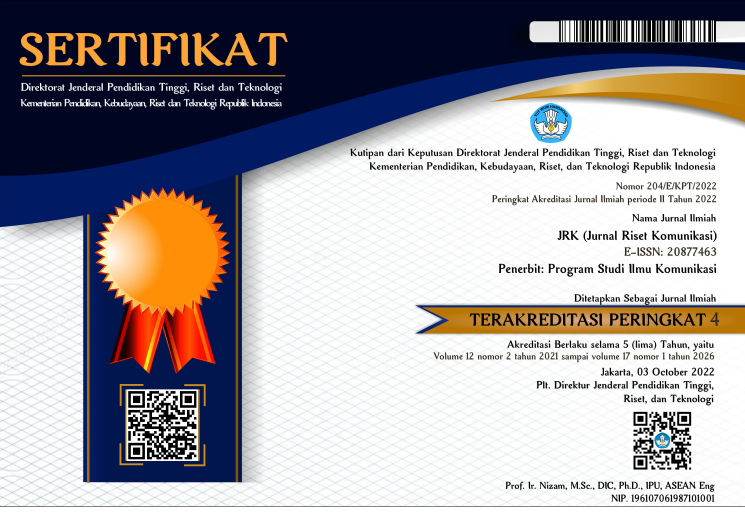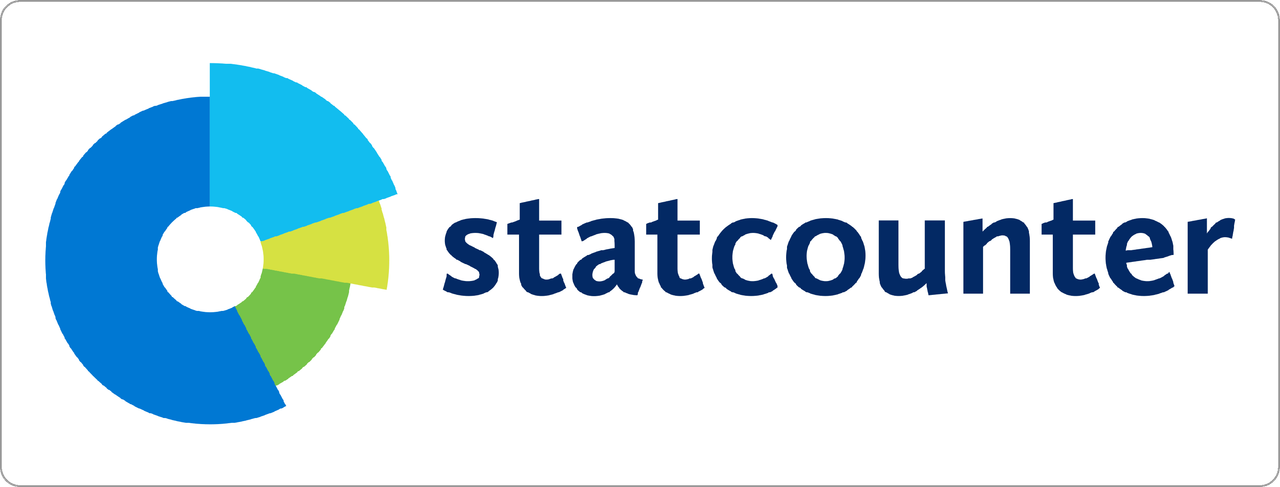HUBUNGAN ANTARA MOTIVASI PENGGUNAAN TWITTER DENGAN MOBILISASI DIGITAL ACTIVISM OLEH MAHASISWA
Abstract
Perkembangan teknologi yang pesat berpengaruh terhadap cara manusia berkomunikasi dalam dunia cyber. Tidak dapat dipungkiri, mahasiswa merupakan pengguna media sosial terbanyak saat ini, tetapi mahasiswa tidak hanya menggunakan media sosial untuk berkomunikasi saja melainkan aktif berpartisipasi dalam perubahan sosial dalam berbagai platform media. Twitter, platform micro-blogging dengan fitur komunikasi massa dan interpersonal, menjadi salah satu platform yang paling digunakan dalam kegiatan aktivisme. Oleh karena itu, penelitian ini hendak meneliti mengenai apakah ada hubungan antara motivasi penggunaan Twitter dengan mobilisasi orang lain dalam kegiatan digital activism oleh mahasiwa. Penelitian ini menggunakan pendekatan uses and gratifications (U&G). Survei kuantitatif akan dilakukan kepada mahasiswa dari universitas yang berwilayah di Pulau Jawa, Indonesia. Pengumpulan data menggunakan kuesioner tertutup yang akan dihitung menggunakan Skala Likert. Pengolahan data menggunakan uji spearman.
Full Text:
PDFReferences
Acharya, A. S., Prakash, A., Saxena, P., & Nigam, A. (2013). Sampling: Why and how of it. Indian Journal of Medical Specialties, 330-333.
Amin, R. (2009). The Empire Strikes Back: Social Media Uprisings and the Future of Cyber. Harvard Kennedy School Review 10, 64-66.
Ariens, C. (2009, February 28). Twitter: A gateway drug to full-blown media narcissism. Retrieved from WebNewser [Weblog]: http://www.mediabistro.com/webnewser/social_nets/
Barker-Plummer, B., & Barker-Plummer, D. (2017). Barker-Plummer, B., & BarTwitter as a Feminist Resource: #YesAllWomen, Digital Platforms, and Discursive Social Change. Studies in Media and Communications, 91-118.
Benford, R. D., & Snow, D. A. (2000). Framing processes and social movements: An overview and assessment. Annual review of sociology, 611-639.
Boyd, D. M., & Ellison, N. B. (2007). Social Network Sites: Definition, History, and Scholarship. Journal of Computer-Mediated Communication, 210-230.
Bruns, A., & Burgess, J. (2011). The use of Twitter hashtags in the formation of ad hoc publics. the 6th European Consortium for Political Research General Conference. Reykjavik: University of Iceland.
Burmeister, E., & Aitken, L. M. (2012). Sample size: How many is enough? Australian Critical Care, 271-274.
Chen, G. M. (2011). Tweet this: A uses and gratifications perspective on how active Twitter use gratifies a need to connect with others. Computers in Human Behavior, 755-762.
Dookhoo, S. (2015). How Millennials engage in social media activism: A uses and gratifications approach.
Dumitrica, D., & Felt, M. (2019). Mediated grassroots collective action: negotiating barriers of digital activism. Information, Communication & Society, 1-17.
Flesher Fominaya, C. (2010). Collective identity in social movements: Central concepts and debates. Collective identity in social movements: Central concepts and debates, 393-404.
García, C., Bülow, M. V., Ledezma, J., & Chauveau, P. (2014). What can Twitter tell us about social movements’ network topology and centrality? Analysing the case of the 2011-2013 Chilean student movement. International Journal of Organisational Design and Engineering, 317.
Gladwell, M. (2010). Small Change. The New Yorker.
Hsu, C. L., Park, S. J., & Park, H. W. (2013). Political discourse among key Twitter users. Journal of Contemporary Eastern Asia, 65-79.
Indonesia, A. P. (2020). Laporan Survei Internet APJII 2019-2020 (Q2). Indonesia Survey Center.
Jacoby, B. (2017). The new student activism: Supporting students as agents of social change. Journal of College and Character, 1-8.
Johnson, P. R., & Yang, S. (2009). Uses and gratifications of Twitter: An examination of user motives and satisfaction of Twitter use. Communication Technology Division of the annual convention of the Association for Education in Journalism and Mass Communication in Boston.
Jonathan, S. (2006). Metode Penelitian Kuantitatif dan Kualitatif. Yogyakarta: Graha Ilmu.
Joyce, M. (2010, October 5). Points of consensus in the optimist/pessimist debate. Retrieved from meta-activism: http://www.meta-activism.org/2010/10/points-of-concensus-in-the-optimistpessimist-debate/
Jurgenson, N. (2012). When Atom Meet Bits: Social Media, the Mobile Web and Augmented. Future Internet, 83-91.
Katz, E., Blumler, J. G., & Gurevitch, M. (1973). Uses and gratifications research. Public Opinion Quarterly, 509.
Kaun, A., & Uldam, J. (2017). Digital activism: After the hype. New Media & Society, 2099-2106.
Kim, Y. K. (2016). Uses and Gratifications, Journalists’ Twitter Use, and Relational Satisfaction with the Public . Journal of Broadcasting & Electronic Media, 503-526.
Konnelly, A. (2015). # Activism: Identity, affiliation, and political discourse-making on Twitter. The Arbutus Review, 1-16.
Martínez-Mesa, J., González-Chica, D. A., Bastos, J. L., Bonamigo, R. R., & Duquia, R. P. (2014). Sample size: how many participants do I need in my research? Anais brasileiros de dermatologia, 609-615.
Morris, M., & Ogan, C. (1996). The internet as mass medium. Journal of Computer-Mediated Communication.
Rubin, A. M. (2009). Uses-and-gratifications perspective on media effect. In J. Bryant & M. B. Oliver (Eds.). Media effects: Advances in theory and research, 165-184.
Rubin, R. B., Sypher, H. E., & Palmgreen, P. (1994). Communication Research Measures: A Sourcebook. New York: The Guilford Press.
Sarno, D. (2009, March 11). On Twitter, mindcasting is the new lifecasting. Retrieved from Los Angeles Times: http://latimesblogs.latimes.com/technology/2009/03/on-twitter-mind.html.
Seelig, M. I. (2018). Social activism: Engaging millennials in social causes. First Monday.
Shah, N. (2013). Citizen Action in the Time of the Network. Development and Change, 665-681.
Sheffer, M. L., & Schultz, B. (2010). Paradigm shift or passing fad? Twitter and sports journalism. International Journal of Sport Communication, 472-484.
Simpson, E. (2018). Integrated & Alone. Companion of the 2018 ACM Conference on Computer Supported Cooperative Work and Social Computing.
Sugiyono. (2013). Metode Penelitian Pendidikan Pendekatan Kuantitatif, Kualitatif, dan R&D. Bandung: Alfabeta.
Sugiyono. (2017). Metode Penelitian Kuantitatif, Kualitatif, dan R&D. Bandung: Alfabeta.
Xu, W. W., Blasiola, S., & Park, H. W. (2014). Predicting Opinion Leaders in Twitter Activism Networks. American Behavioral Scientist, 1278-1293.
DOI: http://dx.doi.org/10.31506/jrk.v13i1.13551
Refbacks
- There are currently no refbacks.









